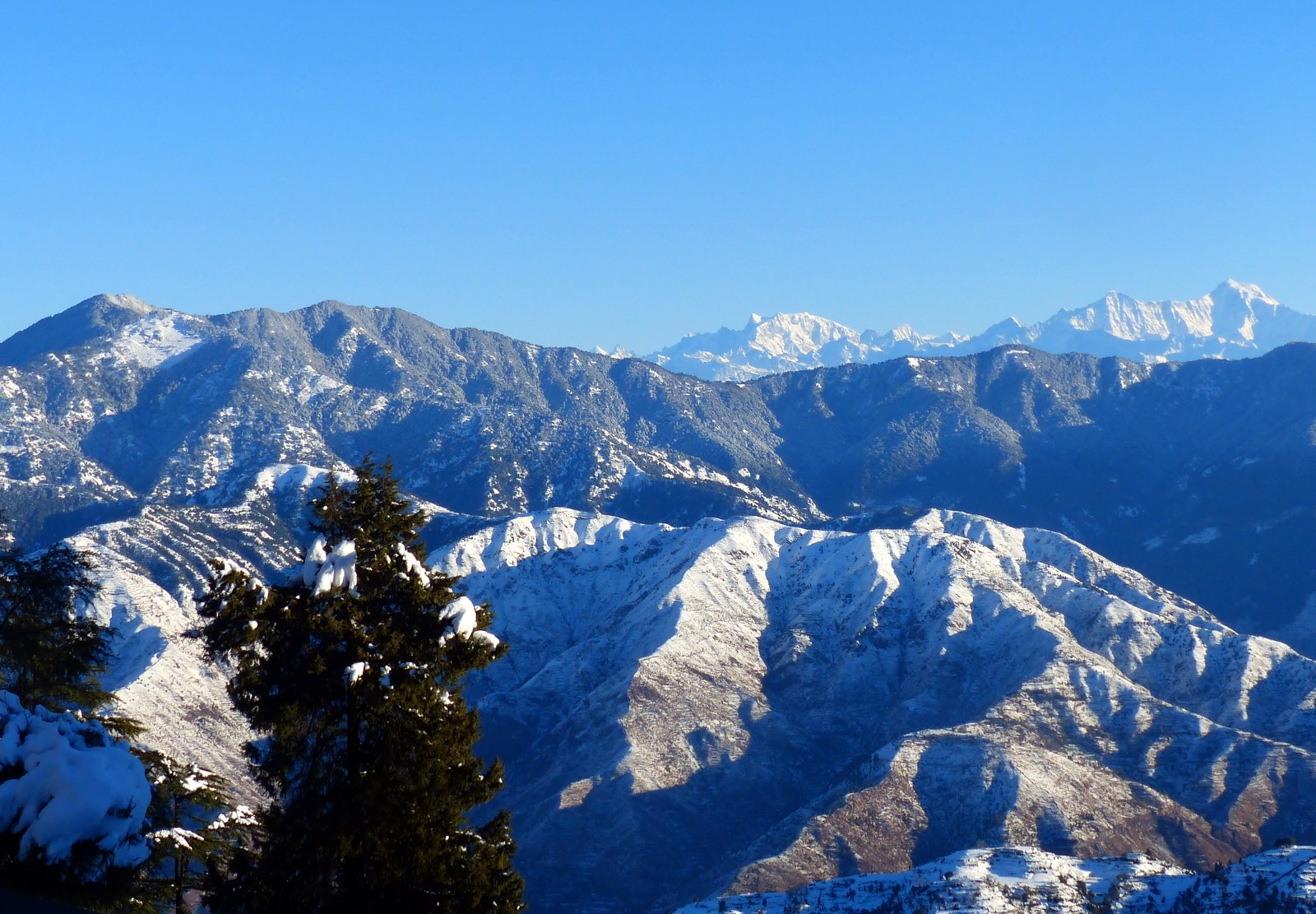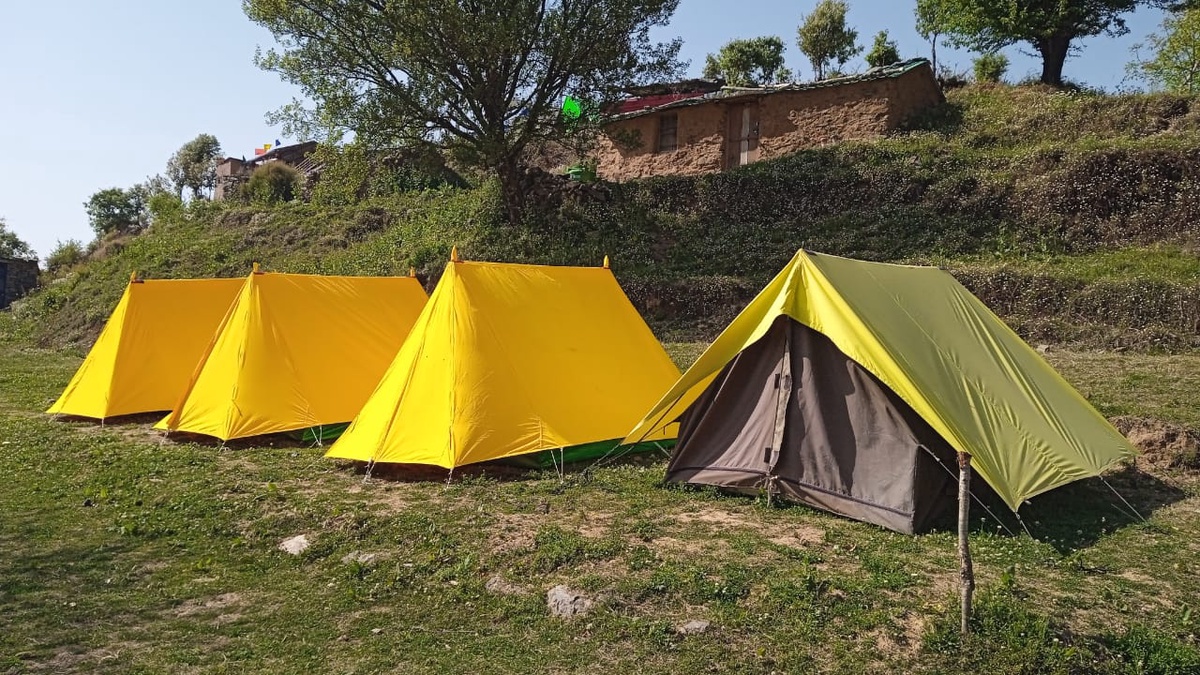Nag Tibba Trek, also known as "Serpent's Peak," is a mountain range that is a component of the Lesser Himalayas, namely the Pir Panjal, Dhauladhar, and Nag Tibba ranges. Situated in the Garhwal Division of Uttarakhand, it is the tallest mountain in the Lesser Himalayan area with a height of 3,050 meters (10,006 ft) above sea level. The "Nag Tibba Range," the second-northest of the Himalayas' five folds, gets its name from Nag Tibba. About 60 kilometers separate Nag Tibba from Mussoorie, a well-known hill resort in Uttarakhand, and about 10 kilometers separate the little town of Pantwari. You may find any credible group that offers the 10-kilometer trek from Pantwari to the top by Googling for "Nag Tibba Trek" in Uttarakhand.
Often referred to as the Himachal or Lower Himalayas, this region lies between the Shiwaliks in the south and the Greater Himalayas in the north. These Lower Himalayan mountains span around 2400 km and are 60–80 km broad. This area is 3,500–4,500 meters above sea level. Some of the peaks in this area are higher than 5,050 m and are always covered with snow. The Middle Himalayan mountains of Uttarakhand include the Mussoorie and Nag Tibba ranges. The Dhauladhar, Pir Panjal, and Nag Tibba ranges are parts of the Lesser Himalayas.
Range of Pir Panjal. It is the longest, spanning more than 300 kilometers from the upper Beas River to the Jhelum River. The majority of the summits, which rise to 5,000 meters, are composed of volcanic materials. Some of the passes you should be aware of include Banihal Pass (2,835 m), Golabghar Pass (3,812 m), Bidil (4,270 m), and Pir Panjal Pass (3,480 m). The Jammu-Srinagar highway and the Jammu-Baramulla railway connect the Kashmir Valley to Jammu via the strategically significant Banihal Pass. And this range is made much more intriguing by the rivers that pass across it: the Kishanganga, Jhelum, and Chenab!

Mythology of the Nag Tibba
Since "Tibba" is the dialect word for hill or peak, the name of the place comes from Nag Devta. In the past, the local people would flock here to pray to Nag Devta for protection. The temple honoring the important Hindu mythological character Nag Devta is the source of the name of the Nag Tibba range. In Hinduism, snakes have always been significant because they represent death, rebirth, and mortality—they are literally "reborn" as their skin sheds. In the past, religion and worship were reactions to a way of life rather than a cause for being; in addition, snakes were considered to be sacred. Snake gods are connected to fertility in some areas.
Many snake deity narratives and associated iconography can be found in Hindu mythology. Examples include Sheshnag, which is identified as Vishnu's resting couch, Anantnag, the infinite serpent, Kaliya, which is associated with Krishna's dance, Vasuki, which represents the churning of the ocean, Padmanabha, the guardian snake, and Manasa Devi, the snake goddess. The most precious possessions of the people living in the Nag Tibba valley are their sheep and livestock, which Nag Devta is said to guard.
How to reach Nag Tibba Summit
There are two ways to get to Nag Tibba Summit: driving to Pantwadi village and walking. Every Indian state has access to Dehradun. Pantwari is situated 60 kilometers from Mussoorie and 90 km from Dehradun. Nag Tibba is a 10-kilometer hike from the base camps in Pantwari.
Nearest Train Station: The closest train station is Dehradun. The railway head is approximately 33 miles away from Mussoorie. Jolly Grant Airport in Dehradun is the closest airport. The Jolly Grant Airport is 60 kilometers away from Mussoorie.
Sunset View From The Campsite
Nag Tibba's wonderful camping experiences have made it one of the top Himalayan treks. Uttarakhand is a really enjoyable place to camp. Beautiful sunsets are set up beside the route, adding to their specialness. As the sun sets, the snow-capped peaks of Bandarpoonch, Swargarohini, and Gangotri appear to be glowing in a warm, orange light, creating a serene and enchanting atmosphere at the campground.
Mountain view from Summit
At sunrise, Nag Tibba offers a stunning view of the spectacular Himalayan range because it is situated at the foothills of Tehri.
The gleaming, snow-covered peaks of Garhwal and Kumaon are visible from this location. For those looking for a quick yet impactful introduction to the breathtaking Himalayan Peaks, Nag Tibba is an excellent option. It's an excellent place to begin exploring if you're searching for an exciting experience that doesn't need a lengthy hike.
Nanda Devi & Trishul:
The mountain ranges extending from Swaragrohini to Nandadevi are breathtakingly visible from the Nag Tibba peak. With a height of 25,643 feet, Mount Nandadevi is among the most stunning summits in the Indian Himalayas.
The Gangotri Range:
From Nag Tibba, closer views show peaks rising to a height of around 20,500 feet. Mountaineers, particularly those studying mountaineering, appreciate climbing mountains like Draupadi ka Danda, Jaonli, and Gangotri to hone their talents.
Kalanag and Bandarpoonch:
The Bandarpoonch range and Mt. Kalanag are two of the most striking views that can be seen from the Nag Tibba walk. The twin summits of White Peak (20,019 feet) and Bandarpunch-I (20,721 feet) resemble the tail of a monkey. Mt. Kalanag, also known as Black Peak (20,955 feet), was first climbed in 1950 by a group that included the renowned Mountaineer & Sherpa Tenzing Norgay. It has a nearly vertical rock face that resembles a black snake.
Swaragrohini Range:
The renowned four pinnacles of the Swaragrohini massifs (3, 2, 1, 4) are located to the left of Bandarpoonch. Observable from the Nag Tibba top are Peaks Nos. 3, 2, and 1. These heights are said to have been used by the Pandavas, Draupadi, and their dog to climb to heaven.
Mt. Srikantha:
At 20,121 feet, Mt. Srikanta is the asymmetrical pyramid peak that may be seen between White Peak and the Gangotri range. There isn't much information on this peak, and because of its isolated location, difficult camping locations, high ice wall, and narrow summit ridge that is cornice-covered, mountaineers may face technical difficulties.
The Nag tibba trek stands out as a scenic trek in the midst of the Himalayas. Offering the perfect blend of adventure and natural beauty, this trek provides an excellent opportunity for beginners and experts alike to explore Uttarakhand, India’s stunning landscapes of rugged ease, and trails get there from Dehradun, is a great option for those looking for a memorable outdoor experience. The dune trip promises to be an unforgettable trip filled with awesome moments and treasured memories in the peacefulness of nature.


No comments yet